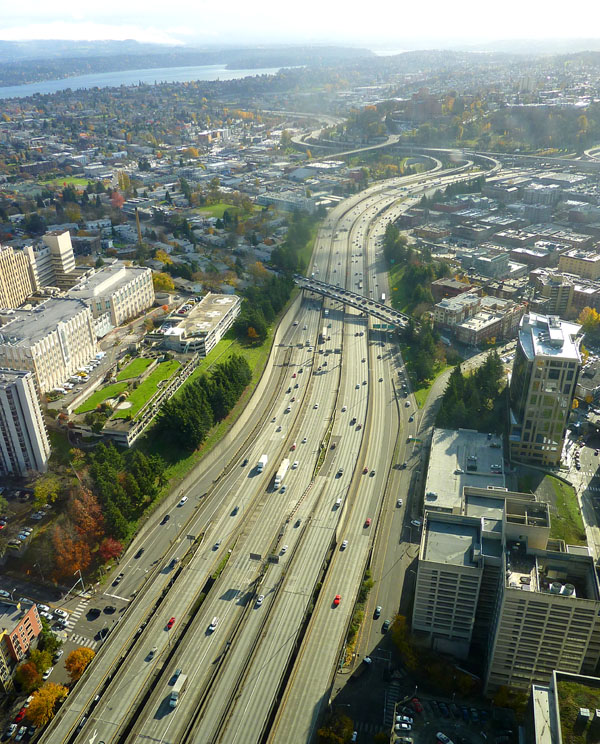Mumford’s The Word
A big part of my obsession with Lewis Mumford is fueled by his extraordinary prescience. In a review of a recent University of Toronto study on the induced demand effect of road building, the Infrastructurist’s Eric Jaffe reveals yet another Mumford gem dating from 1955:
[O]ur one-eyed specialists continue to concoct grandiose plans for highway development, as if motor transportation existed in a social vacuum. … Instead of curing congestion, they widen chaos. …
All the current plans for dealing with congestion are based on the assumption that it is a matter of highway engineering, not of comprehensive city and regional planning, and that the private motorcar has priority over every other means of transportation, no matter how expensive it is in comparison with public transportation, or how devastating its by-products.
More than half a century later, we’re still battling this mindset. The root problem is it’s simply easier to build another road, ignore the evidence all around us, and blindly hope that this time it will magically make it all better.
In contrast, “comprehensive city and regional planning” takes innovative thinking, complex cooperation, and most importantly, a holistic, long-term perspective. And because we have not risen to that challenge, we have gotten what we deserved—a tragically imbalanced, unsustainable transportation system ill-suited for the demands of the coming century.
And while we’re on the topic of his uncanny crystal ball, here’s Mumford laying out the case for smart growth in The City in History, published in 1961:
By building up sub-centers, based on pedestrian circulation, within the metropolitan region, a good part of urban transportation difficulties could have been obviated. To make the necessary journeys about the metropolis swift and efficient the number of unnecessary journeys—and the amount of their unnecessary length—must be decreased. Only by bringing work and home closer together can this be achieved.


